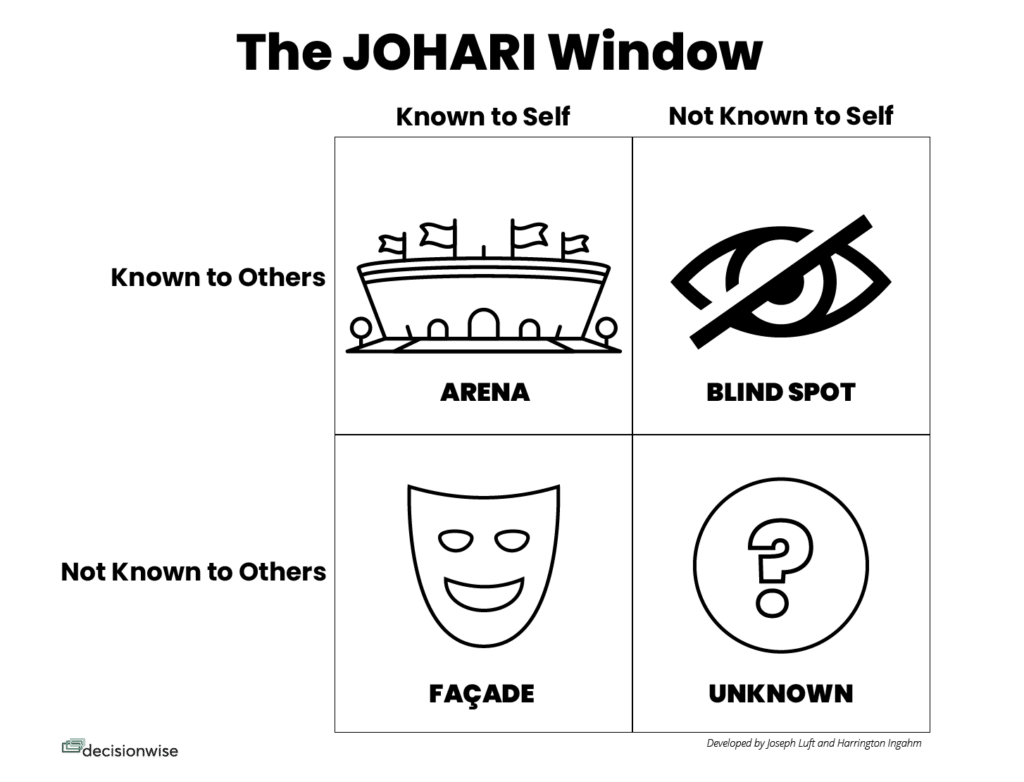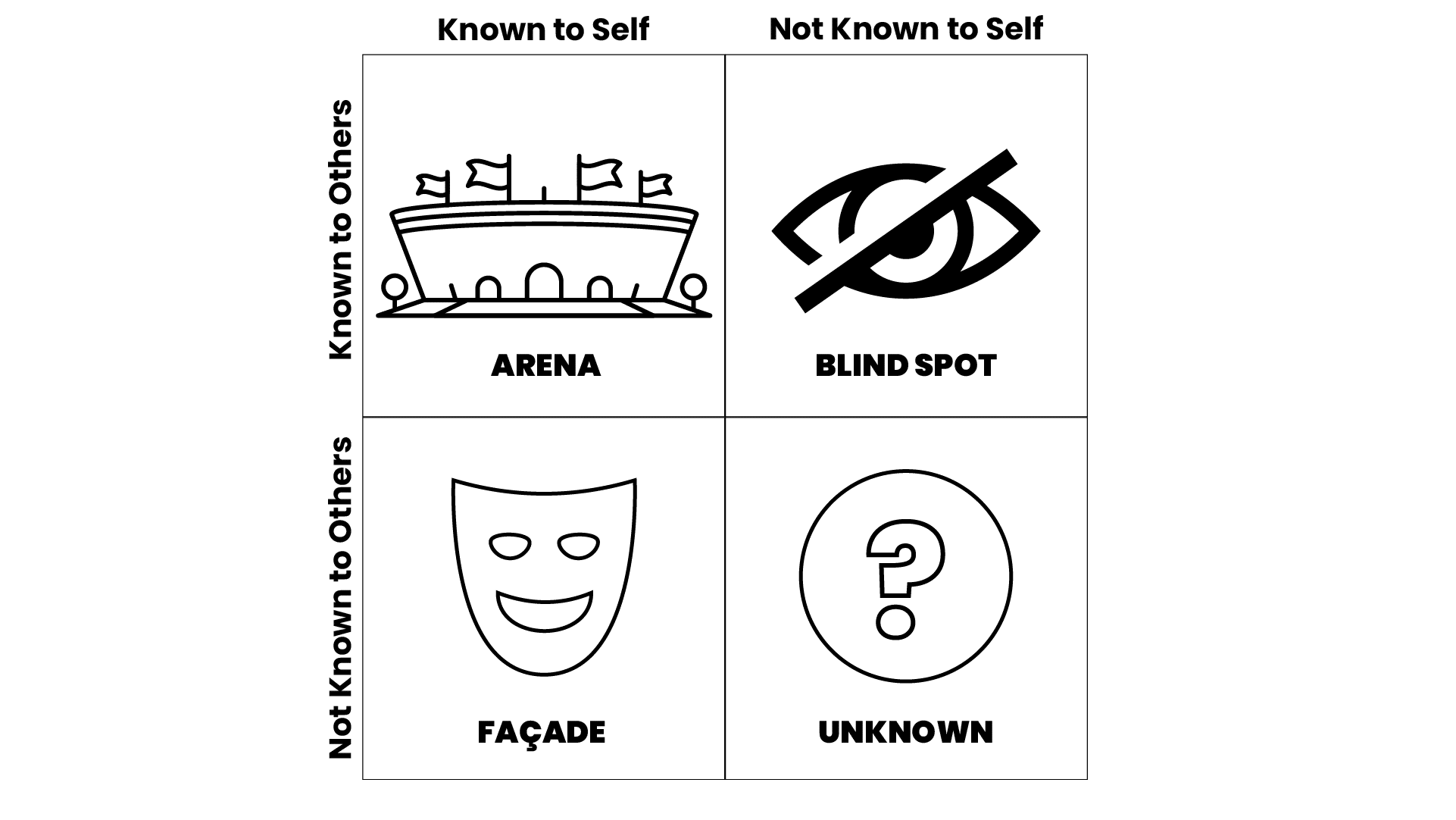Understanding Self-Awareness Through a Time-Tested Model
In the ancient Temple of Delphi, the phrase “Know thyself” was inscribed as a guiding principle for introspection and self-awareness. Despite the passage of millennia, the quest for self-knowledge remains as relevant today as it was in ancient Greece. One powerful tool that modern psychology offers to aid in this quest is the JOHARI window, a model that highlights the importance of feedback in uncovering our blind spots and enhancing self-awareness.
The JOHARI Window Model
The JOHARI window, developed by psychologists Joseph Luft and Harrington Ingham in 1955, is a visual representation of self-awareness divided into four quadrants:
1. Arena: Known to self and others
The Arena represents aspects of ourselves that are openly shared and acknowledged by both ourselves and others. Effective communication and collaboration often occur within this quadrant, as there is mutual understanding and transparency.
2. Façade: Known to self but not to others
The Façade includes information, feelings, and experiences that we are aware of but choose to keep hidden from others. This quadrant can be influenced by fear of judgment or vulnerability, and reducing it can lead to more authentic relationships.
3. Blind spots: Known to others but not to self
Blind spots contain aspects of ourselves that others can see, but we are unaware of. These can include habits, behaviors, or traits that impact how we are perceived. Receiving feedback is essential to uncover and address these areas for personal growth.
4. Unknown: Unknown to both self and others
The Unknown quadrant consists of untapped potential, hidden talents, or subconscious aspects that neither we nor others are aware of. Exploration and new experiences can help bring elements of this quadrant into the Arena.
The model illustrates how individuals can increase their ‘Arena’ by seeking feedback from others, thus reducing the ‘Blind spots.’ This process not only fosters personal growth but also improves interpersonal relationships and communication.

Closing Blind Spots with Feedback
The Role of 360-degree Feedback
One of the most effective methods for gathering comprehensive feedback is the 360-degree feedback mechanism. This approach involves collecting input from various sources, including peers, subordinates, supervisors, and even oneself. By receiving diverse perspectives, individuals can gain a holistic view of their behavior, strengths, and areas needing improvement.
The JOHARI window is a great tool to include when preparing leaders for their first 360 experience. It provides a framework for understanding the feedback and helps leaders navigate the insights they receive about their blind spots, ultimately enhancing their self-awareness and leadership effectiveness.
When incorporated into personal and professional development plans, 360-degree feedback can significantly enhance self-awareness. It provides insights that might otherwise remain hidden, allowing individuals to recognize and address their blind spots. This practice not only fosters personal growth but also drives organizational effectiveness by promoting a culture of openness and continuous improvement.
Practical Applications and Benefits
Incorporating the JOHARI window and 360-degree feedback into organizational development programs can yield numerous benefits. Leaders who actively seek feedback and embrace self-awareness are more likely to build high-performing teams, foster innovation, and create inclusive work environments. Additionally, these tools can help identify and develop emerging leaders by providing insights into their strengths and areas for growth.
On a personal level, individuals who engage in this reflective process can experience improved relationships, enhanced emotional intelligence, and greater overall well-being. The journey towards self-awareness is ongoing, and utilizing the JOHARI window and 360-degree feedback can serve as valuable milestones along the way.
“Know Thyself” With Insightful Feedback
The concept of self-awareness and the need for feedback are not modern inventions. The ancient inscription “Know thyself” at the Temple of Delphi underscores humanity’s long-standing recognition of the importance of self-knowledge. Despite the advancements in psychology and technology, the fundamental challenge of understanding oneself remains unchanged.
By leveraging models like the JOHARI window and tools like 360-degree feedback, we can navigate the complexities of our behavior and perceptions. These methodologies offer structured and actionable approaches to achieving the age-old wisdom of knowing oneself.











